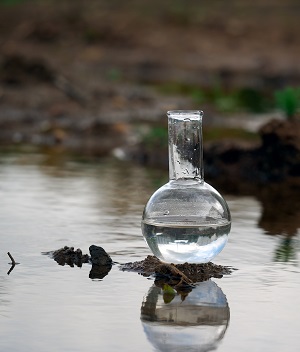Remediation Diagnostics

A number of analytical approaches have emerged in recent years which yield a more detailed understanding of the biological and chemical conditions of contaminated sites.
These cutting-edge diagnostic methodologies allow:
- better assessment of concentration and distribution of contaminants, degradation products, and ground water geochemical parameters, including electron acceptors [e.g., dissolved oxygen, nitrate, sulfate, manganese(V), and iron(III)] and other biogeochemical species [e.g., nitrite, ammonium, Mn(II), Fe(II), chloride and alkalinity];
- bench-scale treatability and microcosm studies to evaluate biodegradation processes and different amendments / combinations for stimulating bioremediation;
- sorption / retardation and degradation / attenuation calculations;
- stable isotope analyses to demonstrate contaminant degradation or to support forensic determination of different contaminant sources; and
- calculations to evaluate contaminant mass flux, degradation to support CEAs and MNA programs.
Enhanced diagnostics can provide additional lines of evidence for a conceptual site model (CSM), can help guide the selection of efficient means for in-situ remediation, and support the transition of MNA, saving costs.
Utilizing best practices and guidance developed by academics, regulatory agencies, ITRC and others, IAL scientists can:
- determine whether biotic or abiotic degradation is occurring at a site, and identify potential degradation processes, pathways, and rates;
- reveal whether multiple / different sources of contamination are present;
- contribute to decision making for remediation strategies, including monitored natural attenuation (MNA);
- identify the need, preferred chemistries and methods for biostimulation and/or bioaugmentation;
- help design and support meaningful and defensible monitoring programs; and
- provide supplemental / complementary data to support site management decisions, including closure.
Some of the categories of diagnostic testing used in in-situ remediation decision making are:
- Geochemistry / Biogeochemistry;
- Dissolved Gases;
- Molecular Microbiology (qPCR, DNA sequencing);
- Degradation Products;
- Volatile Fatty Acids; and
- Compound Specific Isotope Analysis (CSIA).
IAL chemists have the ability and experience to use these tools to guide and optimize in-situ bioremediation, chemical oxidation / reduction treatment and monitored natural attentuation (MNA).
We welcome additional inquiries into these services and invite you to contact us directly to discuss how we may assist with your project needs.






